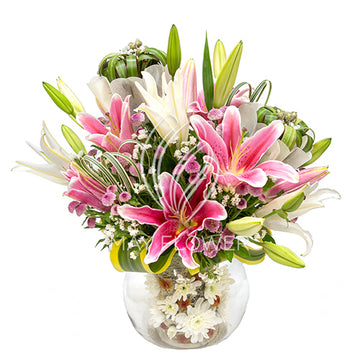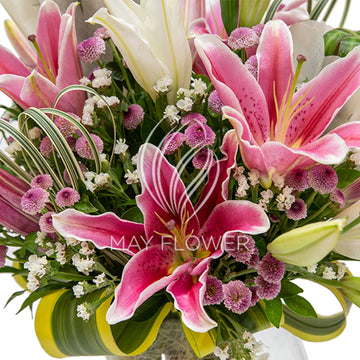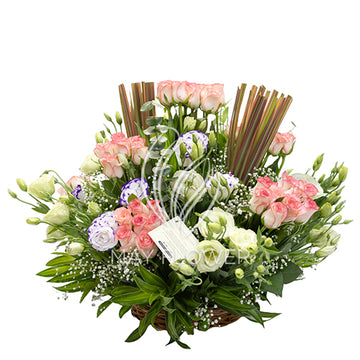Health Benefits of Flowers
The Health Benefits of Flowers
NatMag -Flower power
Flowers have been used as potent remedies for thousands of years. Flowers don’t just lift our spirits by their beauty and aroma, they have also been used as potent remedies for thousands of years. They contain the medical secrets for everything from broken ones to heart failure.
Fantastic Flora
DIY tests may be less than helpful. According to the NICE report, growing levels of misdiagnosis has, in part, been fuelled by use of home test kits now widely available on the internet and high street, as well as by complementary therapists offering a range of different tests.
Scientists are increasingly looking back to old wives’ tales for their hidden health benefits – returning to forests, marshes and meadows in search of new drugs from flowers and herbs.
‘Nature is an incredible chemist,’ says Professor Simmonds. ‘My work at Kew currently involves looking at what is sometimes called herbal healing, or old wives’ tales, but has delivered a range of powerful therapies over the centuries – from digitalis derived from foxglove, to aspirin from willow and meadowsweet.’
For many generations herbs and flowers were used as medicines through necessity, as the nearest hospital was several miles away. Knowledge of their medicinal uses was passed down by word of mouth from parent to child.
Today, flowers are still important in herbal medicine and complementary therapies like the Bach flower therapy, Jan de Vries flower remedy, homeopathy and aromatherapy.
Bach flower preparations
NatMag – Tintures
Around 60 to 70 per cent of patients show signs of improvement after taking the preparations for several weeks.
In the 1930s Dr Edward Bach gave up his Harley Street practice and began experimenting with preparations made with the essences of flowers. He believed that every flower had a vibrational pattern of healing energy and could dissolve negative emotions.
Dr Bach’s philosophy is still followed by Liliana Bellini at the Nelsons Homeopathic Pharmacy, London, who mixes individual cocktails of distilled flowers to suit her patients’ problems.
‘Around 60 to 70 per cent of patients show signs of improvement after taking the preparations for several weeks,’ she says. ‘The Bach flower remedies also help to centre and balance me – the flowers work by vibrating with negative emotions, like rage, self doubt and fear, thus dissolving them.’
There are certain key flowers for the Bach remedy. ‘Important ones are walnut flowers, used to treat nervousness, clematis, given to increase concentration, star of Bethlehem which lessens shock, larch to build confidence, cherry plum to calm fear and white chestnut which encourages a positive outlook,’ adds Bellini.
Dr Sarah Brewer also believes in the restorative effects of flowers, often taking the Bach Rescue Remedy – a mixture of rock rose, clematis, impatiens, star of Bethlehem and cherry plum, dissolved in a brandy-type alcohol. ‘A few drops placed on the tongue helps deal with nervousness and anxiety,’ she says.
Homeopaths, meanwhile, give diluted essences of flowers like arnica, pulsatilla, aconite and calendula in an oral solution to deal with emotional problems.
In contrast, aromatherapy involves flower essences dissolved in oil and applied externally, to calm or stimulate the mind and body. ‘In aromatherapy you use certain flowers externally to stimulate certain functions in the body,’ says Liliana Bellini.
Another complementary therapy is the Jan de Vries flower remedy – available from chemists – which is thought to reduce symptoms such as anxiety. So, which flowers have curative properties?
Foxglove (digitalis purpurea)
NatMag – Foxglove
Foxglove was mentioned as a useful treatment for cardiovascular problems as early as the 17th century. ‘Foxglove was mentioned as a useful treatment for cardiovascular problems as early as the 17th century, in ‘Complete herbal’, Nicholas Culpepper’s comprehensive guide to herbal medicine.It is still used by doctors and paramedics to treat cardiac problems – atrial fibrillation and heart failure.’ Digitalis is very powerful and should only be used on prescription.
Lily of the valley
The ancient Greeks used lily of the valley to treat heart conditions and dropsy. Later the Elizabethan physician John Gerard buried phials of the white flowers in ants’ nests and applied them to gouty feet.
During the First World War it was used to help soldiers recover from the effects of gas poisoning. Lily of the valley can also provide a similar – although milder – drug to digitalis, which is used as a heart stimulant and a diuretic.
Rose
Rosehips have many uses. During the Second World War they were gathered and turned into rosehip syrup, a healthy tonic owing to its high level of vitamin C.
They also have anti-inflammatory properties and are useful for relieving joint pain.
The syrup has also been given to patients to treat coughs and colds. Wine made from rosehips and confetti from rose flowers, thrown at weddings has enlivened country life since Culpepper’s day.
Lavender
NatMag – Lavender
Dried lavender has been used to aid sleep for centuries. In 15th century France, glove-makers used lavender oil to perfume leather – which helped them escape the plague.
Dried lavender has been used to aid sleep for centuries, either sewn into pillows or placed in vases in bedrooms. It also wards off moths. A drug made from lavender aids digestion, relieves flatulence and acts as an antiseptic, while lavender water can be used as a skin tonic and antiseptic skin wash for acne.It is also used in household products to mask chemical smells.
Chamomile
The ancient Egyptians inhaled powdered chamomile flowers as snuff, as well as using it for healing. Nicholas Culpepper referred to it as a ‘soother of many ills’. Taken in a tea, or capsule form, it calms anxiety and headaches, aids sleep and digestion and acts as an anti-spasmodic for such problems as stomach cramps and indigestion. Chamomile treats a plethora of common ailments and its usefulness is supported by scientific research.
Evening primrose
NatMag – Evening primrose
Evening primrose can ease depression, balance hormones and reduce prostate swelling
Research suggests evening primrose can ease depression, balance hormones and reduce prostate swelling. The seed oil contains fatty acids including gamma-linolenic acid (GLA), that balances female hormones and improves circulation.Native North Americans even made poultices with the plant’s leaves to treat bruises and haemorrhoids.
Flowery medicines
Digitalis, a strong drug to treat heart problems, is made from extracts of the foxglove flower.
The painkilling drugs, morphine and codeine, are extracted from the opium poppy.
Aspirin is a derivative of meadowsweet.
St. John’s wort is used to treat mild depression.
Lily of the valley contains crystalline glycoside used in cardiac drugs.
Red clover contains biochanin which fights cancer.
Rosehips offer the best source of vitamin C.
Hence one can see that apart from its beautifying effect, flowers in general have many other uses which were unknown to many in todays day and age. This article outlines one of the other few uses of flowers and its natural effects.
This article contains information and inputs from web articles, magazines and other internet resources.
For more related articles and to order flowers online, visit Mayflower.in

























